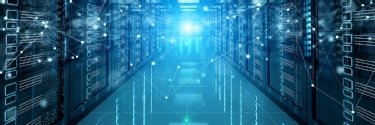Network infrastructure
Network hardware and physical appliances, such as routers, switches, gateways, hubs and bridges, serve as the vital foundation of network infrastructure. Common network protocols and more emergent network software also play major roles in any architecture. While networking has shifted to software-centric principles, see how traditional network infrastructure keeps pace.
Top Stories
-
Answer
03 Apr 2025

Application vs. network load balancing: What's the difference?
Network load balancing and application load balancing both handle traffic requests. However, they process and direct requests with different levels of speed and efficiency. Continue Reading
By- David Jacobs, The Jacobs Group
-
Tip
02 Apr 2025

How to set up a VLAN for enterprise networks
Network administrators configure VLANs to enhance network security and performance. Learn how to set up a VLAN, from configuration steps and best practices to troubleshooting tips. Continue Reading
By- Damon Garn, Cogspinner Coaction
-
Tip
02 Apr 2025

How to set up a VLAN for enterprise networks
Network administrators configure VLANs to enhance network security and performance. Learn how to set up a VLAN, from configuration steps and best practices to troubleshooting tips. Continue Reading
By- Damon Garn, Cogspinner Coaction
-
Definition
02 Apr 2025

What is Border Gateway Protocol (BGP)?
BGP (Border Gateway Protocol) is the protocol that enables the internet's global routing system. Continue Reading
By- Scott Robinson, New Era Technology
- John Burke, Nemertes Research
-
Definition
01 Apr 2025

What is multiplexing and how does it work?
Multiplexing, or 'muxing,' is a way of sending multiple signals or streams of information over a communications link at the same time in the form of a single, complex signal. Continue Reading
By- Rahul Awati
- Robert Sheldon
- John Burke, Nemertes Research
-
Definition
31 Mar 2025

What is a programmable network (network programmability)?
A programmable network is one in which software that operates independently of network hardware handles the behavior of network devices and flow control. Continue Reading
-
Definition
31 Mar 2025

What is the data link layer in the OSI model?
The data link layer is the protocol layer in a program that handles how data moves in and out of a physical link in a network. Continue Reading
By- Rahul Awati
- Andrew Froehlich, West Gate Networks
-
Definition
31 Mar 2025

What is port address translation (PAT)?
Port address translation (PAT) is a type of network address translation (NAT) that maps a network's private internal IPv4 addresses to a single public Internet Protocol address by using network ports. Continue Reading
-
Definition
25 Mar 2025

What is IT operations (IT ops)?
The term IT operations (IT ops) describes the many processes and services an IT department manages and maintains within an organization. Continue Reading
By- Kinza Yasar, Technical Writer
- Paul Kirvan
- Kate Brush
-
Definition
25 Mar 2025

What is software-defined networking (SDN)?
Software-defined networking (SDN) is a networking approach in which software is used to easily configure and centrally manage IT networks. Continue Reading
By- Rahul Awati
- Linda Rosencrance
- Jennifer English, Editorial Director
-
Tip
24 Mar 2025

Wi-Fi 6 vs. Wi-Fi 6E vs. Wi-Fi 7: What are the differences?
Wi-Fi standards continue to evolve. The three most recent standards -- Wi-Fi 6, Wi-Fi 6E and Wi-Fi 7 -- build on each other's capabilities, but all have their own unique features. Continue Reading
By -
Definition
21 Mar 2025

What is network topology?
A network topology is the physical and logical arrangement of nodes and connections in a network. Continue Reading
By- Alexander S. Gillis, Technical Writer and Editor
- Tom Nolle, Andover Intel
-
Definition
17 Mar 2025

What is the Server Message Block (SMB) protocol? How does it work?
The Server Message Block (SMB) protocol is a client-server communication protocol used for sharing access to files, printers, serial ports and other resources on a network. Continue Reading
-
Definition
17 Mar 2025

What is User Datagram Protocol (UDP)?
User Datagram Protocol (UDP) is a communications protocol primarily used to establish low-latency and loss-tolerating connections between applications on the internet. Continue Reading
By- Scott Robinson, New Era Technology
- Linda Rosencrance
- George Lawton
-
Definition
13 Mar 2025

What are managed network services?
Managed network services are networking applications, functions and services that a managed service provider (MSP) remotely operates, monitors and maintains for an enterprise. Continue Reading
By- Jennifer English, Editorial Director
-
Definition
12 Mar 2025

What is a network interface card (NIC)?
A network interface card (NIC) is a hardware component, typically a circuit board or chip, installed on a computer so it can connect to a network. Continue Reading
By -
Tip
10 Mar 2025

The 4 different types of wireless networks
The four types of wireless networks -- wireless LAN, wireless MAN, wireless PAN and wireless WAN -- differ in size, range and connectivity requirements. Continue Reading
By- Nicole Viera, Assistant Site Editor
- David Jacobs, The Jacobs Group
-
Definition
07 Mar 2025

What is a network node?
A network node is a connection point in a communications network. Continue Reading
By- Rahul Awati
- Ben Lutkevich, Site Editor
- Kate Gerwig, Editorial Director
-
Definition
07 Mar 2025

What is a proxy server? Definition and use cases
A proxy server is an intermediary between a user and the internet. It's a dedicated computer or software-driven service that acts as an intermediary or gateway between an endpoint or client device, such as a computer, and a server on the internet. Continue Reading
By- Stephen J. Bigelow, Senior Technology Editor
- Kinza Yasar, Technical Writer
-
Definition
07 Mar 2025

What is Telnet?
Telnet is a network protocol used to remotely access a computer for a text-based communication channel between two machines. Continue Reading
-
Definition
05 Mar 2025

What are port numbers and how do they work?
A port number is a way to identify a specific process to which an internet or other network message is to be forwarded when it arrives at a server. Continue Reading
By- Gavin Wright
- Lynn Haber, Senior Writer
-
Tip
05 Mar 2025

802.11 standards: How do 802.11ac, 802.11ax, 802.11be differ?
Wi-Fi standards -- 802.11ac, 802.11ax and 802.11be -- differ based on frequency bands, spatial streams and maximum data rates, with 802.11be offering the most significant improvements. Continue Reading
By -
Definition
04 Mar 2025

What is a router?
A router is a physical or virtual appliance that passes information between two or more packet-switched computer networks. Continue Reading
By- Kinza Yasar, Technical Writer
- Alissa Irei, Senior Site Editor
- Jessica Scarpati
-
Tip
04 Mar 2025

Types of DNS servers and how they work, plus security threats
DNS security is a critical component of system administration. Learn about five types of DNS servers, what each does and the security threats each server faces. Continue Reading
By- Damon Garn, Cogspinner Coaction
-
Tip
04 Mar 2025

How to troubleshoot common routing errors
It's important to troubleshoot routing errors to minimize network disruptions. Common errors rooted in BGP and OSPF include misconfigurations and various unmet neighbor requirements. Continue Reading
By- Suresh Vina, LMAX Group
-
Definition
03 Mar 2025

What is east-west traffic?
East-west traffic refers to the transfer of data packets that move from server to server within a network's data center. Continue Reading
By- Jennifer English, Editorial Director
- Russ White
-
Definition
03 Mar 2025

What is IMAP (Internet Message Access Protocol)?
IMAP (Internet Message Access Protocol) is a standard retrieval protocol for receiving email. Continue Reading
By- Mary E. Shacklett, Transworld Data
- Rahul Awati
-
Feature
27 Feb 2025

15 common network protocols and their functions explained
Networking makes the internet work, but it needs several key protocols. These common network protocols make communication and connection across the internet possible. Continue Reading
By- Kinza Yasar, Technical Writer
- Michaela Goss, Senior Site Editor
-
News
26 Feb 2025

Cisco, Nvidia expand AI infrastructure partnership
The broader Nvidia-Cisco partnership includes Cisco building systems that combine its OS with Nvidia's Ethernet technologies for optimized AI performance. Continue Reading
By- Antone Gonsalves, Editor at Large
-
Definition
24 Feb 2025

What is modulation?
Modulation is the process of converting data into radio waves by adding information to an electronic or optical carrier signal. Continue Reading
By- Terry Slattery, NetCraftsmen
- John Burke, Nemertes Research
-
Tip
24 Feb 2025

Use network standardization to facilitate automation
Network teams can automate and standardize network designs to improve configurations, simplify operations and more easily implement changes within their networks. Continue Reading
By- Charles Uneze
- Terry Slattery, NetCraftsmen
-
Answer
24 Feb 2025

Cloudflare vs. Amazon CloudFront: Which CDN is right for you?
Compare the key features of Cloudflare vs. Amazon CloudFront to determine which of these two popular CDN services best meets your organization's content delivery needs. Continue Reading
By -
Definition
21 Feb 2025

What is a network packet?
A network packet is a basic unit of data that is transferred over a computer network, typically a packet-switched network, such as the internet. Continue Reading
By- Rahul Awati
- Kinza Yasar, Technical Writer
- Andrew Zola
-
Definition
20 Feb 2025

What is hexadecimal numbering?
Hexadecimal is a numbering system that uses a base-16 representation for numeric values. It can be used to represent large numbers with fewer digits. Continue Reading
By- Mary E. Shacklett, Transworld Data
- Rahul Awati
-
Guest Post
20 Feb 2025

Zero-trust strategies leave networks open to lateral threats
Zero trust assumes a network is already compromised. However, new EMA research shows enterprises are more concerned with securing remote access than internal lateral threats. Continue Reading
By- Shamus McGillicuddy, Enterprise Management Associates
-
Definition
20 Feb 2025

What is a cloud-native network function (CNF)?
A cloud-native network function (CNF) is a service that performs network duties in software, as opposed to purpose-built hardware. Continue Reading
By- Andrew Froehlich, West Gate Networks
-
Definition
20 Feb 2025

What is Simple Network Management Protocol (SNMP)?
Simple Network Management Protocol (SNMP) is an application-layer protocol for monitoring and managing network devices on a local area network or wide area network. Continue Reading
By- Cameron Hashemi-Pour, Former Site Editor
- Jessica Scarpati
-
Definition
20 Feb 2025

What is a wireless mesh network (mesh WiFi)?
A wireless mesh network (WMN) is a mesh network created through the connection of wireless access point (wireless AP) nodes installed at each network user's location. Continue Reading
By- Mary E. Shacklett, Transworld Data
- Wesley Chai
- David Jacobs, The Jacobs Group
-
Definition
18 Feb 2025

What is a protocol data unit (PDU)?
A protocol data unit (PDU) is the basic unit of exchange between entities that communicate with a specified networking protocol. Continue Reading
By- Peter Loshin, Former Senior Technology Editor
-
Definition
18 Feb 2025

What is the Nessus vulnerability scanning platform?
Nessus is a platform developed by Tenable that scans for security vulnerabilities in devices, applications, operating systems, cloud services and other network resources. Continue Reading
By -
News
13 Feb 2025

Cisco rides the AI boon
Cisco reported a 9% revenue increase, driven by AI demand. The company plans to launch new AI infrastructure products, focusing on enterprise data center trends. Continue Reading
By- Antone Gonsalves, Editor at Large
-
Guest Post
12 Feb 2025

How network engineers can prepare for the future with AI
The rapid rise of AI has left some professionals feeling unprepared. GenAI is beneficial to networks, but engineers must have the proper tools to adapt to this new change. Continue Reading
-
News
11 Feb 2025

Cisco launches Smart Switches with AMD DPUs for security
Cisco introduces the Smart Switch series, as enterprises refresh networks in preparation for running AI models and applications. Continue Reading
By- Antone Gonsalves, Editor at Large
-
Definition
11 Feb 2025

What is throughput?
Throughput is a measure of how many units of information a system can process in a given amount of time. Continue Reading
By- John Burke, Nemertes Research
-
Feature
10 Feb 2025

What's the difference between internet and Ethernet?
Internet and Ethernet both enable connectivity and communication, but they differ in scope, purpose, reliability and medium. Use this guide to learn about the concepts. Continue Reading
By- Deanna Darah, Site Editor
-
Definition
10 Feb 2025

What is network configuration management (NCM)?
Network configuration management (NCM) is the process of organizing and maintaining information about all the components in a computer network. Continue Reading
By- Alexander S. Gillis, Technical Writer and Editor
- Eamon McCarthy Earls, Former Associate Site Editor, TechTarget
-
Definition
06 Feb 2025

What is a thin client (lean client)?
A thin client (lean client) is a virtual desktop computing model that runs on the resources stored on a central server instead of a computer's resources. Continue Reading
By- Alexander S. Gillis, Technical Writer and Editor
-
Definition
03 Feb 2025

What is HTTP and how does it work? Hypertext Transfer Protocol
HTTP (Hypertext Transfer Protocol) is the set of rules for transferring files -- such as text, images, sound, video and other multimedia files -- over the web. Continue Reading
-
Definition
31 Jan 2025

What is network monitoring?
Network monitoring, also frequently called network management, is the practice of consistently overseeing a computer network for any failures or deficiencies to ensure continued network performance. Continue Reading
By- Kinza Yasar, Technical Writer
- Terry Slattery, NetCraftsmen
- Alexander S. Gillis, Technical Writer and Editor
-
Tip
31 Jan 2025

How to troubleshoot DHCP issues
DHCP server troubleshooting steps vary depending on the DHCP error. Some of the most common errors include DHCP server failure, lack of available IP addresses and network failures. Continue Reading
By- Terry Slattery, NetCraftsmen
- Damon Garn, Cogspinner Coaction
-
News
30 Jan 2025

HPE-Juniper deal hits DOJ roadblock
The Department of Justice sues to block the $14 billion deal. HPE and Juniper call its analysis 'substantially disconnected from market realities.' Continue Reading
By- Tim McCarthy, News Writer
-
Definition
24 Jan 2025

What is network automation?
Network automation is a process that uses intelligent software to automate the management, configuration, deployment, testing and operation of both physical and virtual devices. Continue Reading
By- Kinza Yasar, Technical Writer
- Andrew Froehlich, West Gate Networks
- Jessica Scarpati
-
Definition
21 Jan 2025

What is the Universal Service Fund (USF)?
The Universal Service Fund (USF) is a United States government program that supports telecommunications access and affordability in rural and low-income communities. Continue Reading
By -
Tip
07 Jan 2025

The role of container networking in DevOps
Containerization isn't just for DevOps teams. Network engineers often set up container networks, ensure connectivity between containers and work with container networking tools. Continue Reading
-
Tip
30 Dec 2024

How to use network automation to ease cloud integration
Cloud network automation can ease the integration of networking and cloud resources. Set clear objectives and standardize tools to make the process smoother. Continue Reading
-
Definition
26 Dec 2024

What is PSTN (public switched telephone network)?
PSTN (public switched telephone network) is the world's collection of interconnected voice-oriented public telephone networks via traditional circuit-switched networks. Continue Reading
-
Feature
23 Dec 2024

Compare 7 network automation tools and their capabilities
Network automation tools automate repetitive tasks, provision devices and manage configurations. Evaluate seven tools to discover the benefits each option provides for efficiency. Continue Reading
By- Kerry Doyle
- Deanna Darah, Site Editor
-
Tip
19 Dec 2024

Network design principles for effective architectures
It's important for network architects to consider several factors for an effective network design. Top principles include flexibility and scalability, redundancy and security. Continue Reading
By- John Burke, Nemertes Research
-
Feature
10 Dec 2024

The business case for AI-driven network orchestration
Organizations that are considering AI-driven network orchestration will find it has many business cases -- chief among them are reduced Opex and efficient resource use. Continue Reading
By -
Tip
03 Dec 2024

The purpose of route poisoning in networking
Route poisoning is an effective way of stopping routers from sending data packets across bad links and stop routing loops. This limits delays and creates a more stable network. Continue Reading
By -
Tip
03 Dec 2024

How to determine when to use reserved IP addresses
Network admins choose IP address configuration based on management requirements. Each address type has a specific role, but reserved IP addresses are best in certain situations. Continue Reading
By- Damon Garn, Cogspinner Coaction
-
News
03 Dec 2024

Arista simplifies switching to its campus network
Arista says companies can switch to its campus network while holding on to legacy stacked switches. Continue Reading
By- Antone Gonsalves, Editor at Large
-
Definition
25 Nov 2024

What is a configuration file?
A configuration file, often shortened to config file, defines the parameters, options, settings and preferences applied to operating systems (OSes), infrastructure devices and applications in an IT context. Continue Reading
By- Stephen J. Bigelow, Senior Technology Editor
-
Feature
06 Nov 2024

AI skills for network professionals
Networking professionals must develop basic networking skills and AI to thrive in a complex landscape. Learn how AI's integration into network management will change the field. Continue Reading
By- Deanna Darah, Site Editor
-
Feature
04 Nov 2024

How AI in the NOC will transform network operations
AI can improve network operations through automation and troubleshooting. Experts at ONUG emphasized phased adoption and methods that enhance NOC monitoring and support. Continue Reading
By- Deanna Darah, Site Editor
-
News
29 Oct 2024

Cisco launches integrated AI infrastructure 'Pods'
In addition to Pods, Cisco launched its first UCS server dedicated to running AI workloads on GPUs. Continue Reading
By- Antone Gonsalves, Editor at Large
-
Tip
28 Oct 2024

Why does DNS use TCP Port 53 and UDP Port 53?
DNS uses both TCP and UDP ports to maintain consistent and reliable network performance. TCP provides zone transfers, while UDP handles name resolution queries and responses. Continue Reading
By- Damon Garn, Cogspinner Coaction
-
Definition
25 Oct 2024

What is remote desktop protocol (RDP)?
Remote desktop protocol (RDP) is a secure network communications protocol developed by Microsoft. Continue Reading
By- Kinza Yasar, Technical Writer
- Wesley Chai
- Brien Posey
-
Definition
25 Oct 2024

What is a MAC address and how do I find it?
A MAC address (media access control address) is a 12-digit hexadecimal number assigned to each device connected to the network. Continue Reading
By- Kinza Yasar, Technical Writer
-
Definition
21 Oct 2024

What is cloud networking?
Cloud networking is a type of IT infrastructure in which the cloud hosts some or all of an organization's networking resources. Continue Reading
By- Alexander S. Gillis, Technical Writer and Editor
-
Answer
15 Oct 2024

Managed vs. unmanaged switches: What are the differences?
Managed and unmanaged network switches differ in various ways, including control and cost. Managed switches support more granular control, while unmanaged switches are easier to set up. Continue Reading
By- Andrew Froehlich, West Gate Networks
- Sudhanshu Gupta
-
Definition
07 Oct 2024

Starlink
Starlink is a satellite internet constellation system that aims to deliver global internet coverage. Continue Reading
By- Kinza Yasar, Technical Writer
-
Definition
03 Oct 2024

What is IPv6 (Internet Protocol version 6)?
Internet Protocol version 6 (IPv6) is a set of specifications from the Internet Engineering Task Force (IETF) that is responsible for identifying network devices and routing traffic across the internet. Continue Reading
-
Tip
30 Sep 2024

The role of network sandboxing and testing
Network sandboxing provides network teams with a risk-free environment to test changes and run potential threat scenarios. This helps prevent outages and other unexpected issues. Continue Reading
-
Tip
27 Sep 2024

How to tackle network automation challenges and risks
Automation makes networks more efficient, but engineers must first mitigate the risks. With planning and training, enterprises can take advantage of automation's capabilities. Continue Reading
By- Charles Uneze
- Terry Slattery, NetCraftsmen
-
Definition
26 Sep 2024

What is TCP/IP?
TCP/IP stands for Transmission Control Protocol/Internet Protocol and is a suite of communication protocols used to interconnect network devices on the internet. Continue Reading
By- Kinza Yasar, Technical Writer
- Mary E. Shacklett, Transworld Data
- Amy Novotny, Senior Managing Editor
-
Definition
26 Sep 2024

What is ICMP (Internet Control Message Protocol)?
ICMP (Internet Control Message Protocol) is a network layer error-reporting protocol that's used to communicate data transmission problems. Continue Reading
By- Kinza Yasar, Technical Writer
- Ben Lutkevich, Site Editor
-
Answer
25 Sep 2024

Network automation vs. orchestration: What's the difference?
Automation and orchestration take different approaches to achieve network efficiency. However, network engineers can use them together to create an efficient, centralized network. Continue Reading
By- Andrew Froehlich, West Gate Networks
-
Answer
24 Sep 2024

Recursive vs. iterative DNS queries: What's the difference?
Name resolution translates human-readable hostnames to IP addresses for device configuration. DNS uses recursive or iterative methods to translate names into IP addresses. Continue Reading
By- Damon Garn, Cogspinner Coaction
-
Answer
11 Sep 2024

HTTP vs. HTTPS: What's the difference?
HTTP and HTTPS are web communication protocols. HTTP lacks security, while HTTPS encrypts data to adhere to the security standards of confidentiality, integrity and authenticity. Continue Reading
By- Damon Garn, Cogspinner Coaction
-
Tip
10 Sep 2024

How to implement CI/CD in network automation
CI/CD processes help deploy code changes to networks. Integrating a CI/CD pipeline into automation makes networks more reliable, reducing configuration errors and downtime. Continue Reading
-
Definition
10 Sep 2024

What is asynchronous?
In general, asynchronous -- from Greek asyn- ('not with/together') and chronos ('time') -- describes objects or events not coordinated in time. Continue Reading
By- Ben Lutkevich, Site Editor
-
Definition
04 Sep 2024

What is a personal area network (PAN)?
A personal area network (PAN) is a small network that interconnects technology devices within a limited range of just a few meters. Continue Reading
By- Kinza Yasar, Technical Writer
-
Definition
04 Sep 2024

What is a unique identifier (UID)?
A unique identifier (UID) is a numeric or alphanumeric string that is associated with a single entity within a given system. Continue Reading
-
Tip
27 Aug 2024

How to subnet in cloud network environments
Cloud and on-premises subnets use IP ranges, subnet masks or prefixes, and security policies. But cloud subnets are simpler to set up, while on-prem configuration is still manual. Continue Reading
By -
Feature
26 Aug 2024

Wi-Fi upgrades on the horizon as enterprises eye Wi-Fi 7
Enterprises have been slow to adopt Wi-Fi 7, as they find previous generations suit their needs. However, experts predict enterprises will upgrade to Wi-Fi 7 in the next 12 to 18 months. Continue Reading
By -
Definition
22 Aug 2024

What is a URL (Uniform Resource Locator)?
A URL (Uniform Resource Locator) is a unique identifier used to locate a resource on the internet. Continue Reading
By- Jessica Scarpati
- John Burke, Nemertes Research
-
Tip
21 Aug 2024

How to create subnets in IPv4 and IPv6 networks
Network administrators subnet networks into segments for improved control and efficiency. IPv4 uses subnet masks, while IPv6 uses prefixes, and each has its own unique steps. Continue Reading
By -
Video
19 Aug 2024

An explanation of subnets
Subnets make networking manageable and ensure efficient communication. Without subnetting, sending emails, texts and documents would be significantly slower. Continue Reading
By- Jennifer English, Editorial Director
-
Definition
19 Aug 2024

What is Real-Time Transport Control Protocol (RTCP)?
Real-Time Transport Control Protocol (RTCP) is a network communication protocol that works alongside Real-Time Protocol (RTP) to monitor and track data delivery on large multicast networks via RTP's associated transmission metrics. Continue Reading
-
Definition
19 Aug 2024

What is EM shielding (electromagnetic shielding)?
EM shielding (electromagnetic shielding) is the practice of surrounding electronics and cables with conductive or magnetic materials to guard against incoming or outgoing emissions of electromagnetic frequencies (EMF). Continue Reading
-
Definition
16 Aug 2024

What is FTP?
File Transfer Protocol (FTP) is a network protocol for transmitting files between computers over TCP/IP connections. Continue Reading
By- Alexander S. Gillis, Technical Writer and Editor
-
News
15 Aug 2024

Cisco cuts workforce for third time in 2 years, pursues AI
Cisco cuts its workforce by 7% and forms one unit for networking, security and collaboration to energize AI and security sales. It's the third round of layoffs since 2022. Continue Reading
By- Antone Gonsalves, Editor at Large
-
Tip
13 Aug 2024

The pros and cons of optical wireless communication
OWC transfers data using highly directional light in free space. While OWC delivers high-speed data transfers, it is susceptible to multipath dispersion and interference. Continue Reading
By -
Tip
09 Aug 2024

How to plan and start a network upgrade
Network architects face challenges when considering a network upgrade, but enterprises can keep problems to a minimum by following a careful plan and listening to end users. Continue Reading
By- David Jacobs, The Jacobs Group
-
Tip
07 Aug 2024

How to calculate a subnet mask from hosts and subnets
IP addressing and subnetting are important and basic elements of networks. Learn how to calculate a subnet mask based on the required number of subnets and hosts. Continue Reading
By- Terry Slattery, NetCraftsmen
- David Davis
-
Tip
05 Aug 2024

Tips to provide network support for remote workers
Enterprises must modernize their networks to support remote work, while IT teams ensure networks have proper bandwidth and security, as well as dedicated help for remote workers. Continue Reading
By -
Feature
01 Aug 2024

Wi-Fi 6 vs. Wi-Fi 5: What's the difference?
Wi-Fi 6 was introduced as the next-generation Wi-Fi standard after Wi-Fi 5. While similar in certain aspects, Wi-Fi 5 and Wi-Fi 6 differ in terms of features and capabilities. Continue Reading
By- Michaela Goss, Senior Site Editor
-
Feature
30 Jul 2024

9 types of networks and their use cases
Networks differ based on size, connectivity, coverage and design. This guide explores the most common types of networks, their benefits and use cases. Continue Reading
By- Deanna Darah, Site Editor
-
Answer
29 Jul 2024

An introduction to SFP ports on a Gigabit switch
SFP ports enable Gigabit switches to connect to a variety of fiber and Ethernet cables and extend switching functionality throughout the network. Continue Reading
By- David Jacobs, The Jacobs Group
- Chris Partsenidis, Firewall.cx
-
Feature
26 Jul 2024

The benefits and drawbacks of network as a service
NaaS, with its varied definitions and attributes, is hard to define. In a new EMA survey, enterprises laid out their expectations for NaaS, including its benefits and drawbacks. Continue Reading
By- Nicole Viera, Assistant Site Editor
-
Answer
23 Jul 2024

MAC address vs. IP address: What's the difference?
A MAC address and an IP address each identify network devices, but they do the jobs at different levels. Explore the differences between the two and learn why both are necessary. Continue Reading
By- John Burke, Nemertes Research
- Chris Partsenidis, Firewall.cx